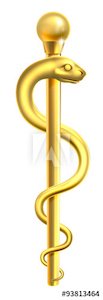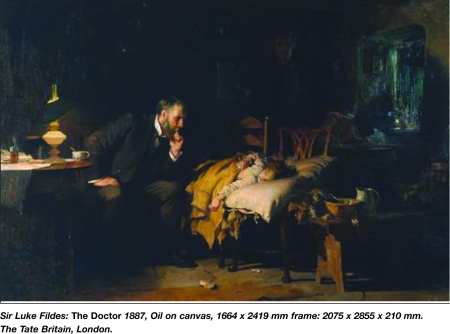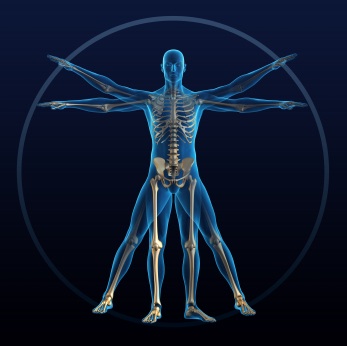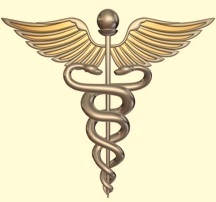A Guide for Physicians
and Other Healthcare Providers
The Art of Patient Care
"... the secret of the care of the patient is in caring for the patient."
-Francis Peabody, 1925
 |
The Art and Science of Patient Care: Maintaining the Proper Balance Within the Challenges of the Current Health Care System
There was a time not long ago, when physicians and nurses didn’t have much else to offer patients other than personal attention, comfort, compassion and concern for their ailments. Medical professionals were revered and respected for that and for what little they could do in regard to symptomatic treatment for incurable conditions.
The Twenty-First Century has thrust health care into an era of modernization, precipitated by advances in medical technology and computerization of everything in sight. We have made fantastic strides in the diagnosis and treatment of many serious illnesses. Patients are living longer and more productive lives as a result of these wonderful advances.
Modern Challenges to Patient Care
However, concomitant with these changes, we have experienced the indisputable depersonalization of patient care. Patients are often treated as diseases or numbers. We often hear medical personnel referring to a patient as “the gallbladder in room 232” or “the COPDer in 476”. We order test after test instead of taking a history because if we don’t “prove” our diagnosis with a test, we may be subjected to a lawsuit later if something goes wrong.
Health care costs have spun out of control. Even with the advent of The Affordable Care Act ("ObamaCare"), many people in the US are still not able to get health insurance, or if they do, the deductible on the lower-end plans is so high that's it's worthless. Access to care will continue to be a serious problem. There are simply not enough doctors - especially primary care doctors. Prenatal care and birth rates are suffering. Medicare patients often have difficulty finding a doctor who will take them. Doctors’ incomes are severely restricted by insurance companies. Busy primary care physicians have to see 30-40 patients a day to make enough income to cover office overhead and pay off their own expenses beginning with a $3-400,000 debt for medical training. Most medical students and doctors are no longer considering ambulatory primary care as a viable option for a career. It's too much work and the compensation doesn't make it worthwhile. Who wants to work from 7AM to 9PM and be on call 24/7 for less than what the average businessman makes? There are just too many sacrifices.
A 15 minute visit with an 80 year-old patient who has diabetes, arthritis, heart failure, and hypertension out of control, and who has just developed shortness of breath recently, and who needs 6 prescriptions rewritten is woefully inadequate. Other patients in the waiting room are feeling ignored. The medical care this person is receiving is hurried and often inadequate. The stress of managing people's lives under these conditions is overwhelming. The reimbursement for a visit like this is less than the cab fare it would cost to get the patient to the office.
There are very few medical offices that can survive independently. Most doctors have had to join large administrative groups to share expenses and to have the ability to negotiate with third party payers (health insurance companies). In return, these group administrators usually require a certain amount of productivity from each provider. In other words, the provider has to be able to see 25-30 patients a day in order to stay in the organization.
Focus on Patient Care
These are very difficult challenges. Unfortunately, in the middle of it all, we often lose site of the fact that our patients are people – in many cases, very ill people - who are looking to us for support and guidance as well as medical care. We have to continually remind ourselves why we are here, why we are doing this. What should be the center of our attention? The patient is, of course! Individual patients with unique medical needs. There is an art to providing this support and to personalizing care for each and every patient in the midst of an imperfect environment. This art is popularly known as bedside manner.
Anyone who works in the health care profession should know there is a right way and a wrong way to approach patient care. They also should know this approach is somewhat different for every patient they encounter due to multiple variables – type of illness, gender, age, background, etc. This is an art that we learn mostly by experience – both by our own personal experience and by observing the experiences of others. How well we assimilate the information from these experiences and how well we use that knowledge determines a very large part of how we interact with patients and how we are perceived as medical professionals. There is usually no formal training for this, and where there is formal training, it usually amounts to a very small percentage of the total educational package.
Patient Care Is an Art as Well as a Science
The key word here is the art of patient care. For the purposes of this site, the reference is not so much on the science of medicine per se, but rather on how medical personnel can interact with patients to improve the healing process, rather than dismantle it.
This is not to say that science is unimportant; but rather that concern for the humanity of the patient should not be so overwhelmed by science as to be nonexistent at the bedside. Indeed, true clinical competence is a blend of knowledgeable application of medical science along with the recognition and understanding of the human condition. The art of this blend, the integration of these disciplines of art and science, and how well it is done in the confines of a rather adverse environment of our current health care system, is what determines the quality of patient care that we provide. One without the other is not sufficient.
This can be a science unto itself. One of the influences that this site will hopefully promote is more discussion and ultimately more research on how to learn and how to practice this art of patient care in a more meaningful and fulfilling way for both ourselves and our patients alike. In addition, the more formal exploration and inclusion of these concepts into medical training programs would have a huge effect on the future of medicine in this country.
Some people say you have to be born with this talent. I don’t think so. I do think it comes easier to some than others; but, whatever the genetics and background of the individual, patient care is an art that can be learned and practiced and improved upon, just as drawing or painting a thoughtful picture can be learned and practiced to the point where it can be greatly appreciated by others.
So what kind of doctor, nurse, care partner or therapist do you want to be?
What is your approach to patient care?
How do patients perceive your approach to them and your overall competence?
Are your patients doing as well as they could be?
Is your bedside manner conducive to healing?
References on Patient Care:
Peabody, Francis W., The Care of the Patient, JAMA, Volume 88, Number 12, 19 March, 1927, pp. 877-882. (1927;88(12):877-882. doi:10.1001/jama.1927.02680380001001)
Christenson, Gary A., Conceptualizing the Arts as Tools for Medicine and Public Health, Journal of Applied Arts & Health, Volume 4, Number 3, 1 January 2014, pp. 247-264(18)
Medical References and Resources for the Art of Patient Care
*****
This site was written primarily as a reminder of why we are here as health care professionals. I have heard so many people complaining about the absence of concern and generally poor manners at the bedside or in the office and the psychological effect that this has on many patients and families, that I have begun to wonder if we are inadvertently adding to the suffering of our patients rather than reducing it.
These pages contain many of my experiences and observations over almost forty years of medical practice as an internist and a hospitalist. It is my hope that by reading this, some health care professionals will recognize that perhaps there is a better way to practice. We need to change our approach to patients and lead our society to develop better ways of delivering health care that will take into account the needs of our patients and those of our providers as well. I am also hopeful that each one of us will recognize the need to improve ourselves, so that we can become much more people-oriented, humanitarian, professional and knowledgeable about how to approach all kinds of patients and challenging situations, and who will at the very least be perceived as someone who cares and is concerned about our patients. If we can do this, we will earn and perhaps regain our patients' trust, and ultimately they will receive better care, which is the real goal, and your best reward.
"The practice of medicine is an art, not a trade; a calling, not a business; a calling in which your heart will be exercised equally with your head." - Sir William Osler
| - About the Author - Weblog Rules |
| | This site complies with the HONcode standard for trustworthy health information: verify here. |
This site has been selected for entry
into the HealthLinks Directory...
This site was last updated on September 2, 2025.
* * * * *
Recent Articles
-
Aging in Place
Sep 02, 25 04:07 PM
Aging in Place Without Compromise: How to Modify Your Home for Longevity, Safety, and Style -
Spotters and Stethoscopes: The Future of Whole-Person Health
Aug 26, 25 06:37 AM
Integrating fitness with medical offices and hospitals. -
Caregiver Business
Aug 19, 25 08:39 AM
What caregivers really need - and how to build a business around it.
Table of Contents...
- The Art of Patient Care Blog
- All the newest and/or updated pages on this site are listed here along with visitor comments, article reviews, etc - all relating to the art of patient care.
- Search Page
- This page will provide an easy way to access information on this site.
- Health Information on the Web
- How do you know which websites displaying health information are reliable?
- Sitemap for The Art of Patient Care
- This page contains The Art of Patient Care sitemap with links to <b>all the pages</b> on this site.
- About the Author
- This page contains a brief biography of the author of The Art of Patient Care website along with disclaimers, disclosures and certifications of confidentiality.
- Health Care Web Site Development
- If you are interested in health care web site development or starting your own blog, this may be helpful.
- Your Comments on Patient Care
- This is the place where you can add your own comments on patient care - experiences, concerns and ways to improve on the art of caring for patients.
- Privacy Policy
- Privacy policy
- Medical Professionalism
- What is medical professionalism? What does it mean to be a professional? How is it linked to good patient care?
- Bedside Manner
- What are the specific elements that define good bedside manner? Why is this so important to people?
- Compassion
- Compassion is an important component of patient care from both a therapeutic as well as a humanitarian viewpoint, yet its importance is little emphasized in our training.
- Medical Ethics in Clinical Practice
- A summary of basic medical ethics required for clinical practice and proper patient care.
- Clinical Judgment
- Clinical judgment requires a balance between compassion, science and common sense. How do we sort out what is the best option when there are no textbooks or studies that tell us what to do?
- Objectivity
- Objectivity is another mark of professionalism in patient care - another goal for which to strive - but it's not always as easy as you might think.
- The Doctor Patient Relationship
- The doctor patient relationship is a special bond like no other. It needs to be respected and treated carefully as a partnership emphasizing equality and trust.
- Health Care Team
- The health care team is an integral part of high quality patient care. This page describes how this team should function and work together for the welfare of the patient.
- Medical Office Staff
- Your medical office staff is extremely important in setting the tone of the office. Make sure their goals of patient care are in line with yours.
- Burnout
- Burnout is a syndrome that can bring even the most compassionate physician to his/her knees, resulting in poor bedside manner and, even worse, poor patient care.
- Communication in Health Care
- Communication in health care is one area where we could all improve. What are the best ways to do this?
- Listening to Patients
- Listening to patients is the key to proper pursuit of diagnosis and correct treatment.
- Patient Teaching
- Patient teaching is an excellent and important way to build your relationship with your patients.
- Communication with Family Members
- Communication with family members is extremely important and an integral part of patient care.
- Communication with Medical Consultants
- Communication with other medical consultants about your patient is necessary for proper coordination of care, patient safety and is a sign of your concern for the patient's welfare.
- Types of Patients Encountered in Clinical Medicine
- There are a number of different types of patients encountered in clinical medical practice. These are some of the more common types of patients and the best ways to interact with them.
- Whole Patient Care
- Whole patient care requires knowledge of the patient's background and emotional stresses blended with scientific medical knowledge for optimum care and treatment.
- Palliative Care
- Palliative care has become a specialty all its own, dealing with compassionate symptomatic control for suffering patients.
- Support for the Patient During A Serious Illness
- How should friends or family support a patient during a serious illness?
- Patient Centered Care
- The healthcare industry in this country needs to refocus itself on patient centered care. What's good for the patient will also be good for the healthcare system.
- Advance Directive
- Discussing the advance directive and code status with patients and families is an art unto itself.
- Unexpected Death
- Dealing with an unexpected death is never easy for healthcare providers. How can we help families and ourselves cope with these situations?
- Patient Rights
- Knowing and understanding patient rights are an integral part of patient care. Here's where to find a summary of these rights.
- Patient Care: Case Studies
- This page contains a collection of case studies relating to the art of patient care. These are real cases which help define the relationships among doctors, patients and medical care.
- Continuity of Care
- Talking about continuity of care isn't enough. We have to do something about it.
- Medical Risk Management
- Medico-legal risks are an ever present concern in the current health care environment. Medical risk management is needed now more than ever.
- Health Care Issues
- Current health care issues in America make it increasingly difficult for physicians to practice the kind of patient care they were trained to do.
- Medical Practice Models
- There are different types of medical practice models from which to choose. How do they compare?
- Concierge Medicine - The Myths and Misconceptions
- The concept of concierge medicine has emerged as an alternative to traditional medical practice. Many generalizations have been made that may not be accurate. Here is my experience.
- Health Care Technology and Patient Care
- Health care technology is growing at a rapid rate and has great potential for improving patient care but not without cost.
- Evidence Based Medicine
- Evidence based medicine has been popularized as the goal to strive for in medicine; perhaps the goal should be good patient care first.
- Narrative Medicine
- The integration of Narrative Medicine into medical training appears to be an excellent method of teaching young professionals how to incorporate humanity and understanding into patient care.
- Giving Bad News
- Giving bad news to a patient is never easy. What is the best way to do this?
- Giving Good News to Patients
- How should you give good news to a patient? This isn't always as easy as it sounds.
- Afterlife
- Is there an afterlife? Should we use this to comfort people as they are dying?
- Among Friends
- A case report of the importance of love and friendship at the end of life.
- The Hippocratic Oath
- For your review: The Hippocratic Oath - the original and the modern versions - upon which the principles of medicine and patient care are founded.
- Primum Non Nocere
- We understand the need for proper utilization of medical resources, but knowingly causing potential harm to patients to reduce costs should not be part of the equation.
- When the Doctor-Patient Relationship Goes Bad
- What to do when the doctor-patient relationship goes bad
- Humor in Medicine
- You have to have a sense of humor in medicine for many reasons, but be careful with it and don't overdo it.
- Elder Abuse
- Information about a serious and rising health problem as our population becomes older.
- Cannabis and Cancer
- How patients can get relief from the side effects of cancer treatment.
- Healthy Lifestyle
- How to enjoy and healthy lifestyle while saving money at the same time.
- Caring for Patients with Chronic Illnesses
- Caring for Patients with Chronic Illnesses takes patience, understanding and compassion and is sometimes quite challenging. Here are some solutions.
- Women Leadership in Healthcare
- How Women in Healthcare Can Cultivate Leadership Skills.
- How to Launch a Medical Practice
- The basics of how to launch a medical practice that lasts.
- Caregiver Business
- What caregivers really need - and how to build a business around it.
- Spotters and Stethoscopes: The Future of Whole-Person Health
- Integrating fitness with medical offices and hospitals.
- Medical References and Resources for The Art of Patient Care
- A listing of medical references and resources relating to the art of healing and patient care.
- Medicine Library
- My online medicine library contains my favorite resources for medical diagnosis and treatment. I keep these bookmarked for easy access on my computer.
- Aging in Place
- Aging in Place Without Compromise: How to Modify Your Home for Longevity, Safety, and Style
Disclaimer | Privacy Policy | Copyright | Sitemap | Contact | Comments
Contributions encouraged!
Do you wish to contribute a case study or comment? If so, it's easy to do so. Just fill out the form below and click on the "Submit Your Contribution" button. Then watch for your entry to appear in the area below this form or on the Blog Page. (Contributions will be reviewed for content and appropriateness before they appear.)





















